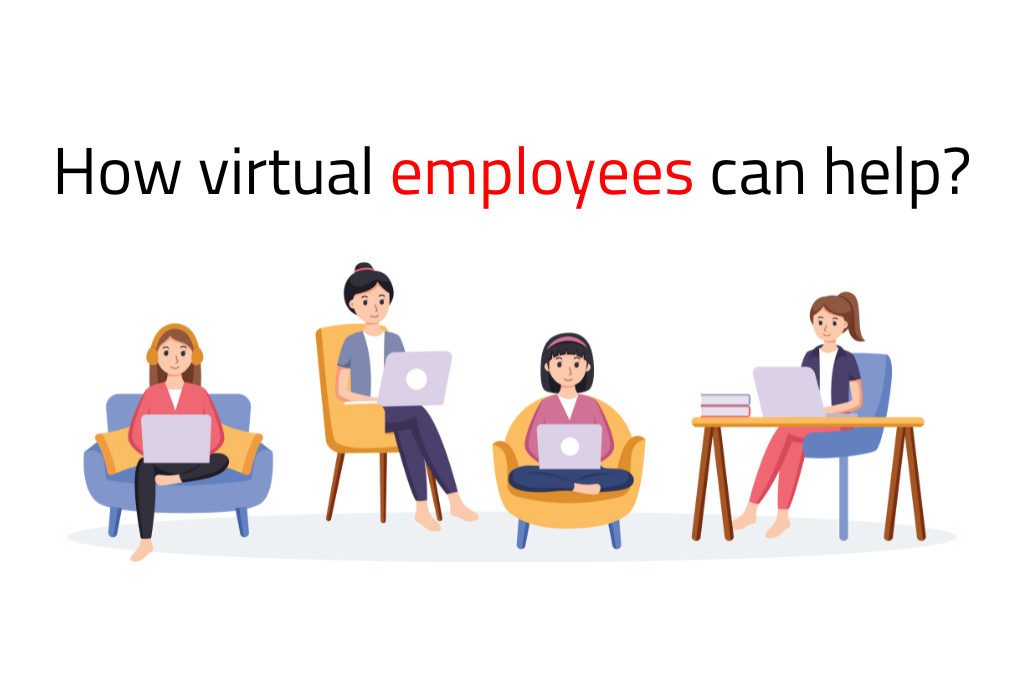Staffing challenges are a common issue for businesses. Whether it’s finding skilled workers, managing costs, or keeping up with demand, hiring can feel overwhelming. For managers and executives, these problems often take time and energy away from other priorities.
But there’s a solution: virtual employees. These remote professionals offer a smart and flexible way to tackle hiring issues. They give businesses access to skilled talent while saving time and money.
Let’s take a closer look at common staffing problems and how virtual employees can help.
Common Staffing Issues
1. It’s Hard to Find the Right Talent
Hiring for specialized roles isn’t easy. Some skills are rare, and local talent pools often don’t have what you need. This makes finding the right person a long and frustrating process.
The result? Open positions stay vacant for weeks or even months, slowing down important projects.
2. Hiring Costs Are High
Recruiting new employees is expensive. The cost of advertising jobs, using recruiters, and conducting interviews exists.
Then there’s the expense of onboarding, training, and providing benefits. These costs can quickly add, especially for senior roles. For businesses on a tight budget, this can be a huge challenge.
3. Hiring Takes Too Long
Filling a position isn’t just costly—it’s also time-consuming. Reviewing resumes, scheduling interviews, and onboarding new hires can take weeks. While this process drags on, other team members often have to pick up extra work. Deadlines get harder to meet, and productivity drops.
4. Employee Turnover is Disruptive
When a good employee leaves, it affects more than just their role. It can disrupt the whole team. Managers have to start the hiring process all over again, which takes time and resources. Turnover can also lower morale, especially if it happens frequently.
5. Scaling the Team is a Struggle
As businesses grow, so does the need for more staff. But scaling a team quickly can be difficult. Traditional hiring processes do not prioritize speed. Similarly, scaling down during quieter periods can lead to tough decisions, like layoffs, which hurt morale and brand reputation.
How Virtual Employees Can Help

Virtual employees offer a practical way to solve these staffing problems. These professionals work remotely, providing businesses with the flexibility they need. Here’s how virtual employees can make a difference.
1. Access Global Talent
One of the best things about virtual employees is the ability to hire from anywhere. You’re no longer limited to local candidates. This means you can find highly skilled professionals with the exact experience you need. Whether it’s a software developer in Europe or a digital marketer in Asia, the options are endless.
2. Save Money
Virtual employees help cut costs in several ways. You don’t need to provide office space, equipment, or other in-house resources. Salaries and benefits may also become more affordable, depending on the location of the virtual employee. For companies aiming to significantly reduce costs by nearly 70%, consider this as a major victory.
3. Hire Faster
The hiring process for virtual employees is often much quicker than traditional methods. Many staffing platforms and agencies provide pre-vetted candidates who are ready to start. This saves time and helps you fill roles faster. Projects can move forward without unnecessary delays.
4. Scale Your Team Easily
Virtual employees make it simple to scale your team up or down. If you have a substantial project, you can bring on extra help quickly. When the project ends, you can adjust your team size without layoffs or long-term commitments. This flexibility keeps your business agile.
5. Increase Productivity
Virtual employees can work across different time zones, giving you coverage around the clock. For example, while your in-house team wraps up for the day, your virtual team in another region can continue working. This keeps projects moving and helps you meet deadlines.
6. Lower Turnover Risks
With virtual employees, you’re often working with professionals on a project or contract basis. This reduces the risk of sudden turnover disrupting your team. You get the expertise you need without the long-term challenges of finding replacements.
Examples of How Virtual Employees Help Businesses
Let’s break this down with some real-world examples:
- Startups: A tech startup needed to build an app but didn’t have the budget for a full in-house team. They hired a virtual development team, saving money and meeting their deadline.
- Small Businesses: A marketing agency needed someone to handle administrative tasks. Instead of hiring a full-time assistant, they brought on a virtual professional. This freed up time for their core team to focus on client work.
- Enterprises: A large company faced a temporary gap in its IT department. They hired virtual cybersecurity experts to ensure operations ran smoothly during this period.
These scenarios show how businesses of all sizes benefit from virtual employees. Whether it’s for short-term projects or ongoing support, the flexibility and expertise they provide are invaluable.
Why Virtual Employees Are the Future
Virtual employees aren’t just a temporary fix—they’re shaping the future of work. Businesses are recognizing the benefits of remote professionals and shifting away from traditional hiring methods. Here’s why this trend is here to stay:
- Technology helps teams work together. Tools like Slack and Zoom make communication simple. Project management platforms like Asana keep everyone organized. These communication tools are essential for virtual teams. These tools ensure communication and workflows stay smooth, no matter where your employees are located.
- Employees Prefer Remote Work: Many professionals value the flexibility of remote jobs. By offering virtual positions, businesses attract top talent that might not consider traditional roles.
- Global Competition Demands Agility: To stay competitive, businesses need to adapt quickly. Virtual employees provide the agility required to respond to market changes and opportunities without delays.
How to Get Started with Virtual Employees
If you’re ready to explore virtual staffing, here are some simple steps to get started:
- Identify Your Needs: Start by figuring out which roles or tasks can be handled remotely. This could be anything from customer support to specialized technical work.
- Choose the Right Platform: Look for virtual staffing agencies or platforms that match your needs. Many of these services offer pre-vetted candidates, saving you time.
- Set Clear Expectations: Outline job responsibilities, deadlines, and communication processes upfront. This ensures both you and your virtual employee are on the same page.
- Use the Right Tools: Invest in tools that make remote work easier. These might include video conferencing apps, file-sharing platforms, and task management software.
- Monitor Progress: Track performance through regular updates and key performance indicators (KPIs). This keeps everything on track and helps you measure success.
Need more info on How to Hire the Right Virtual Employee Visit this guide to hire VEs for your business
Conclusion
Staffing issues don’t have to slow your business down. Virtual employees offer a modern solution to these challenges. They provide access to global talent, reduce costs, and allow businesses to scale quickly and efficiently.
By rethinking traditional hiring practices, you can build a more flexible, productive workforce. Whether you’re running a startup, a small business, or a large enterprise, virtual employees can help you achieve your goals. The future of work is here, and it’s virtual. Are you ready to embrace it?







